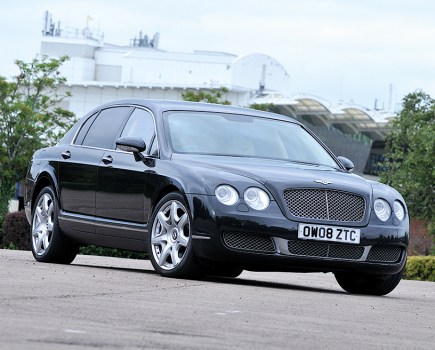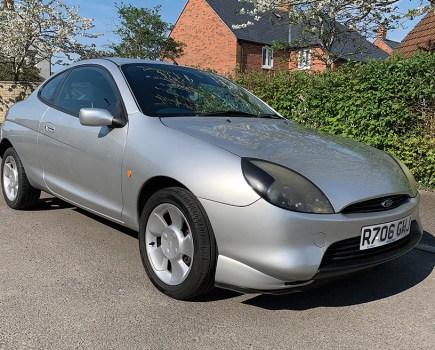Introducing the cheapest Honda S2000 in the UK; a new Classics World project kicks off with an ambitious buy, a partnership with Machine Mart and plenty of crust
What do you get when you mix late-‘90s Japanese engineering, a famously fizzy VTEC engine, and one of the UK’s lowest asking prices for a Honda S2000? That’s exactly what our friends over at Fast Car set out to find – and what they delivered might just be the most budget-friendly S2K on the market today.
This is not our first S2000 project car on Classics World – check out our previous antics – so what makes this one so special? Well, at just £3500 it was the cheapest Honda S2000 for sale at the time! Here’s why this tired-but-straight AP1 was worth saving, how we’ll get it road-ready on Classics World, and why the more adventurous tuning will live with our colleagues at Fast Car.
Why rescue the cheapest S2000 in the UK?
Honda’s S2000 sits in that sweet spot between analogue feel and millennial engineering: a rev-hungry F20C, a rifle-bolt six-speed and a compact chassis that still lights up a B-road. That’s why clean cars fetch strong money and why our scruffy example – cloudy headlights, tired wheels, musty hood and crusty rear arches – was so affordable. What mattered was the core: straight, unrecorded, complete and crying out for a methodical recommission.
Buying the cheapest S2000 in the UK only makes sense if you’re realistic. Ours was priced low because the body needed honest attention and the maintenance clock had clearly lapsed. That’s perfect for this series. We’ll resurrect what’s good, repair what’s not, and only then decide how far to stray from Honda’s original brief. If you’re wary of modifications, we hear you. We’d always rather evolve a high-mileage, weathered example than “ruin” a mint survivor. Saving a tired car protects the best ones.



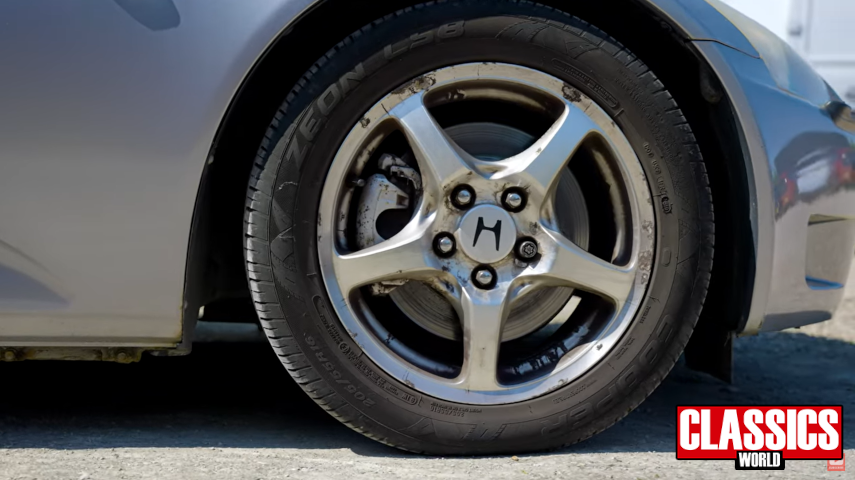


Two paths, one project
Our plan is simple. On Classics World we’ll get the car running properly, MoT’d and respectable: servicing, cooling fixes, safe brakes and those everyday wins that make ownership a joy again. Once the basics are nailed, we’ll hand the project to Fast Car for the performance and styling phase. That keeps both audiences happy. If you’re a purist, stick with us for the repair and restoration journey. If you’re curious about chassis tuning, body styling and wheels, follow the same car on Fast Car and watch it evolve.
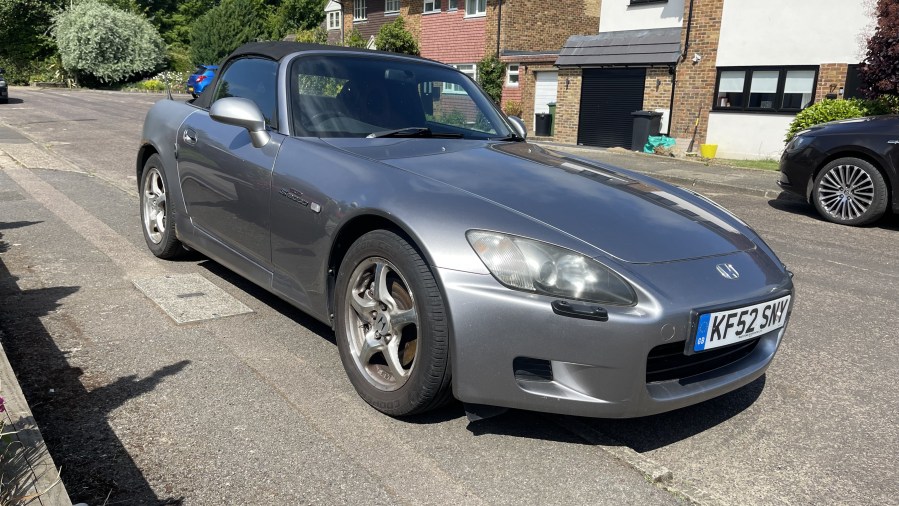
Cheapest S2000 in the UK: servicing, cooling fixes and a fresh MoT
Before any tuning talk, our £3500 S2000 needed a clean bill of health. Here’s how we serviced the engine, cured the cooling gremlins and earned an MoT – plus why we green-lit uprated front brakes now rather than waste money on parts that would be removed later.
A bargain becomes a burden if you skip the basics. Warmed through on the lift, the cheapest S2000 in the UK got a proper service: old oil out, engine flush circulated, then fresh 5W-40 and a quality filter. Brake fluid and coolant were renewed to reset the maintenance clock after a period of standing. The drained oil looked tired rather than terrifying—encouraging on a high-miler that had simply been left to sulk.
Cooling was the real drama. The original radiator failed on a test run to the MoT station, so we fitted an alloy replacement and a new fan switch, then bled the famously fussy S2000 heater circuit with patience. When the last bubble finally cleared, the temperature needle settled and stayed there, whether in traffic or stretching its legs. Back at the test centre, the Honda came home with a pass and, for the first time, felt like a car you’d happily point at a Sunday loop.
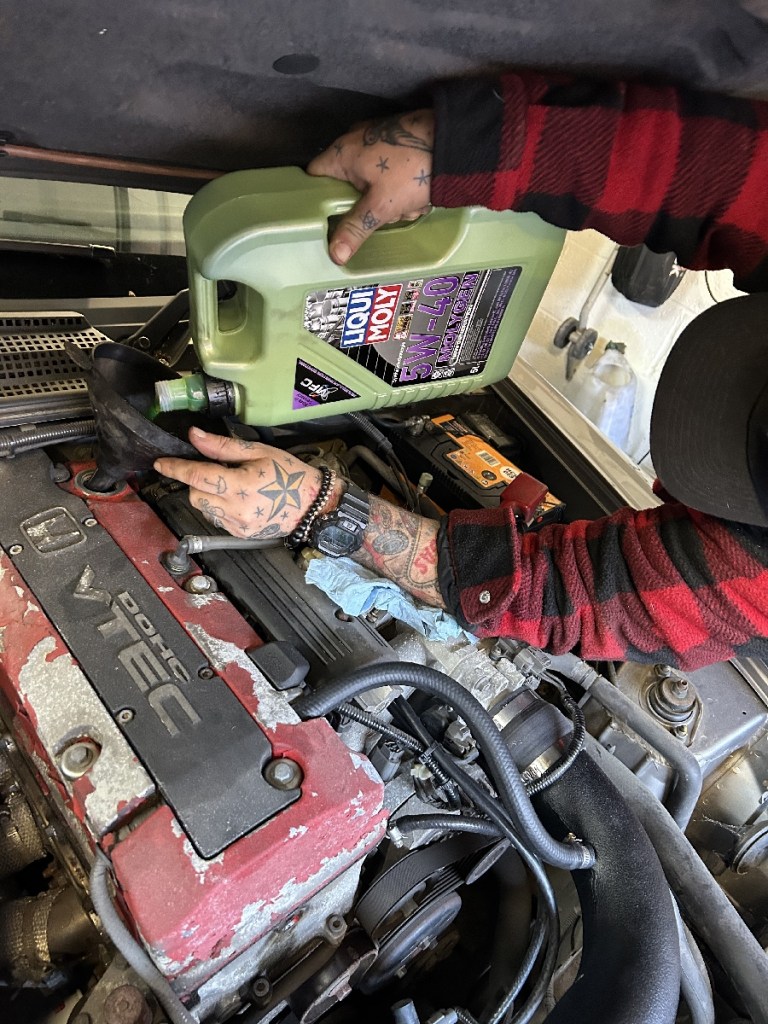

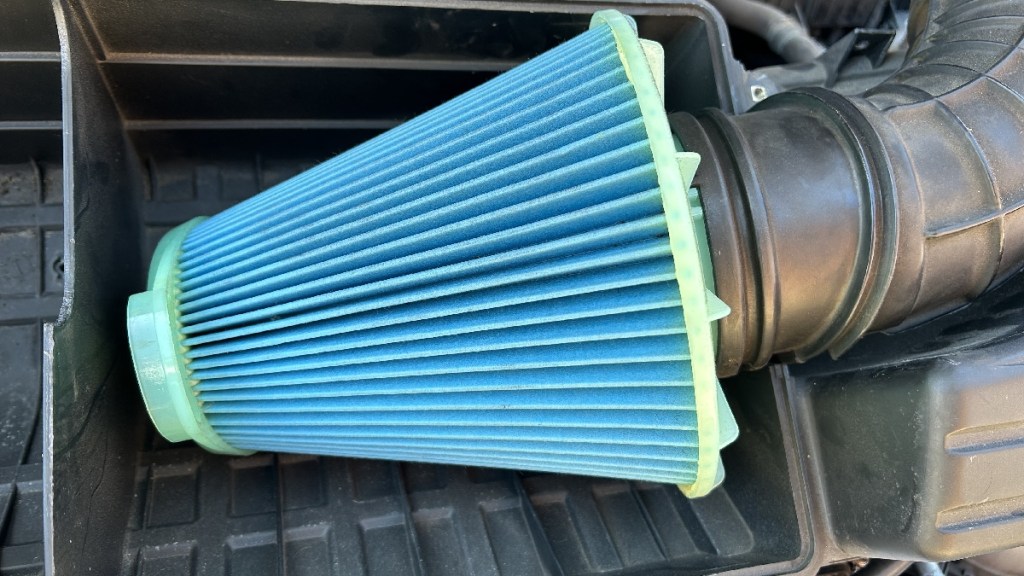
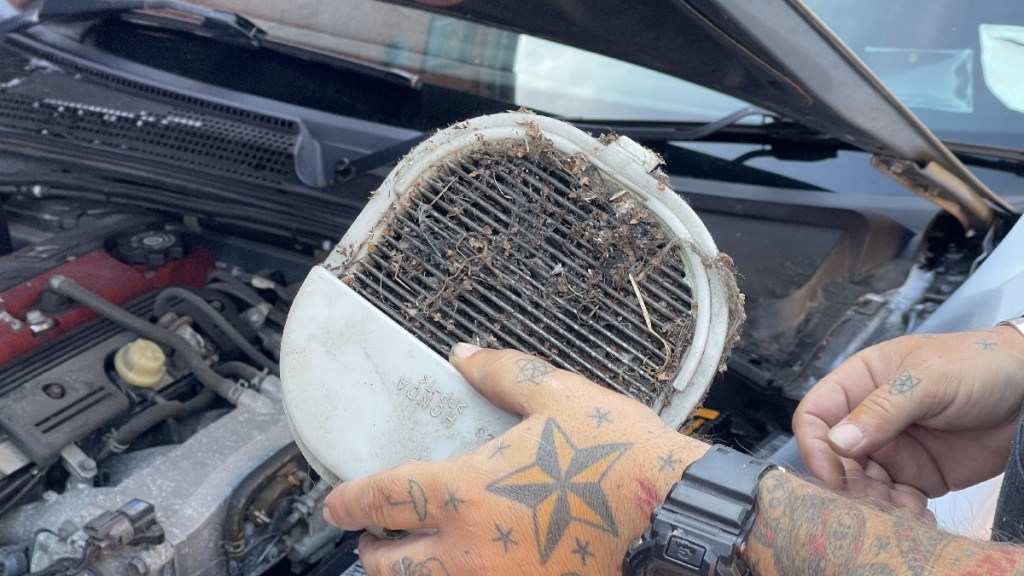
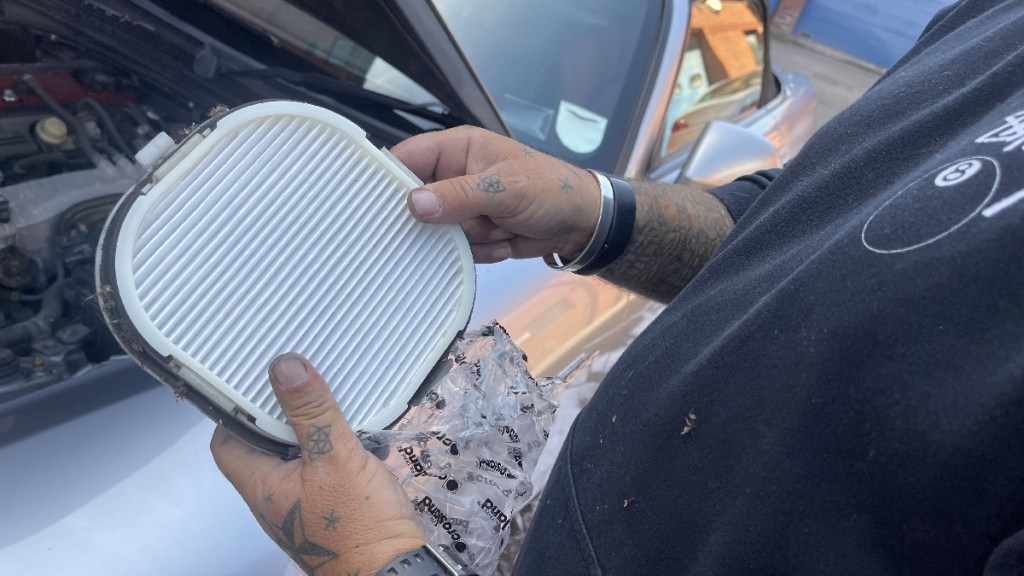

Sensible fixes, sensible timing
Exhaust leaks had turned Honda’s metallic fizz into a shout. Tightening missing and loose manifold fixings restored civility; a new cat-back system then added a clean, OE-friendly note without motorway drone. On the intake side, we refreshed perished couplers and fitted a serviceable cone filter in place of a disposable panel—tidier now, cheaper in the long run.
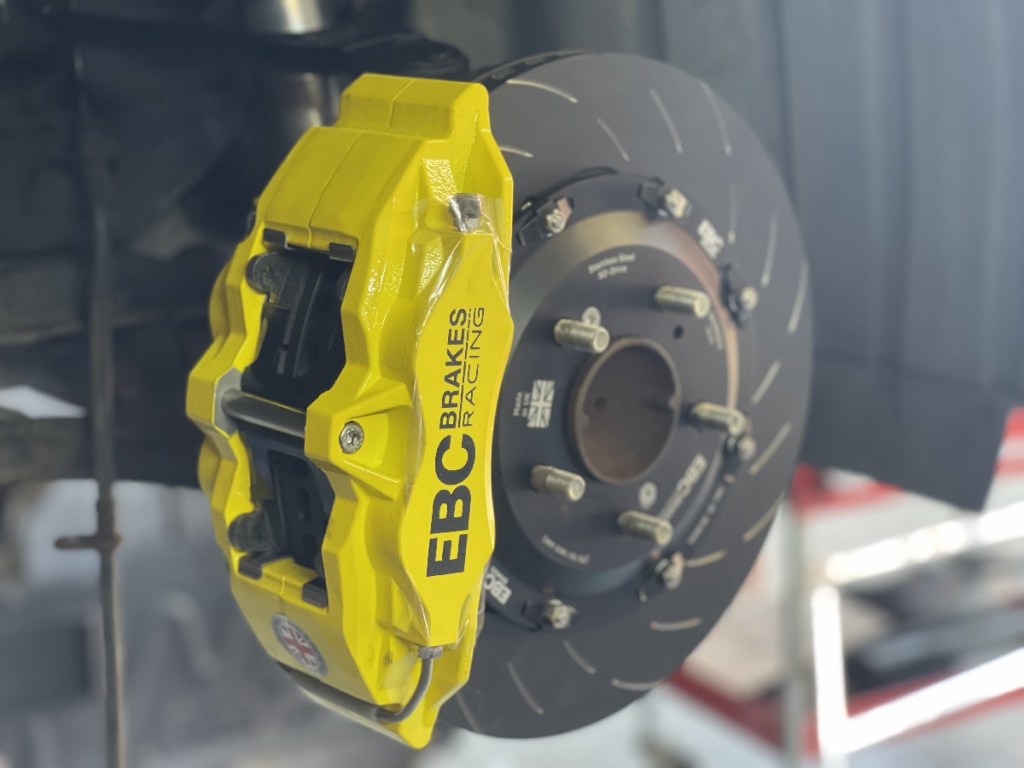
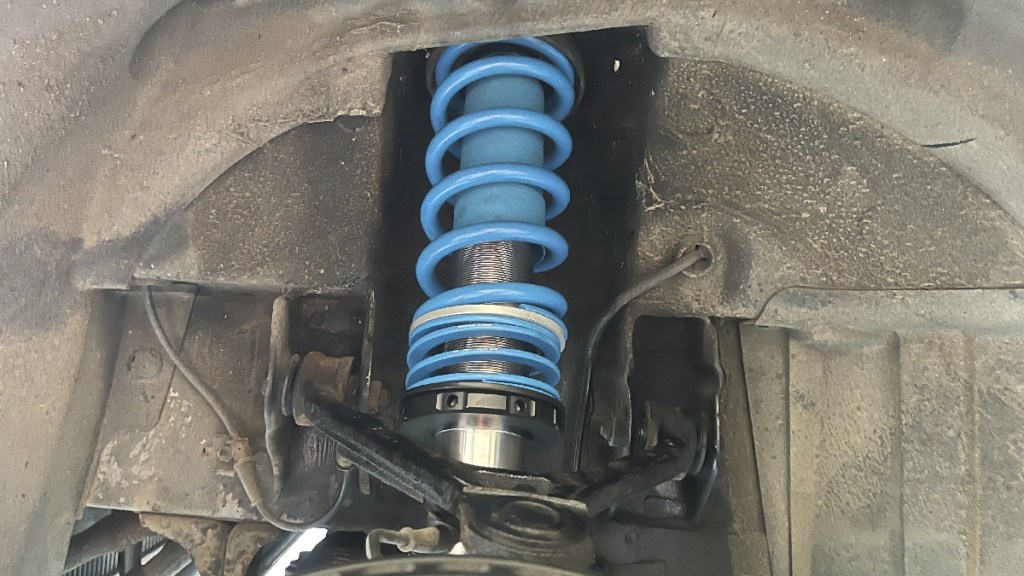
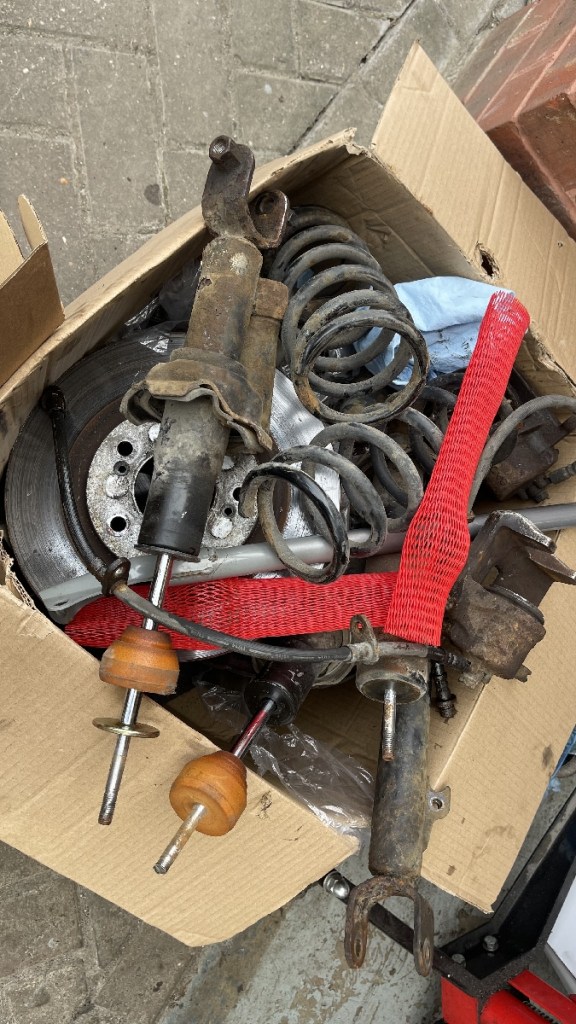
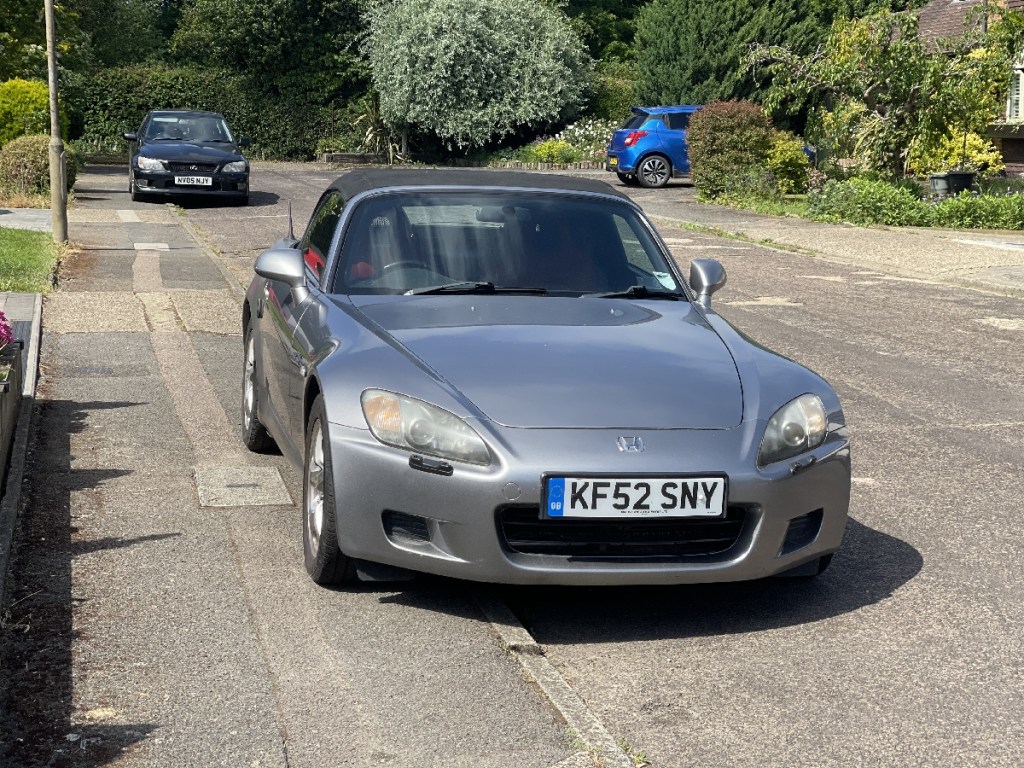
Brakes were non-negotiable. Seized rears were replaced outright. Up front, we took a pragmatic decision: rather than spend on fresh OE parts that Fast Car would remove in a week, we allowed their team to install uprated front hardware at this stage. The result is a firm, progressive pedal you can lean on today, with no waste tomorrow. Suspension upgrades will be explored in their channels; our focus here stays on the health check that makes everything else worthwhile.




Banishing the damp
From day one, the cabin smelt lived-in rather than fresh. The hood fabric wasn’t torn and the mechanism worked, so refurbishment beat replacement. The soft-top was gently cleaned in multiple light passes—never pressure-washed—left to dry fully, then evenly recoloured. A hydrophobic protector followed, so rain now beads and sheds instead of soaking the weave. With latch alignment tweaked, the roof pulls down uniformly across the header rail. The effect is immediate: the cabin smells clean, wind rustle drops and there’s no damp under the mats after a downpour. It’s the kind of low-cost win that makes every short trip feel special again.


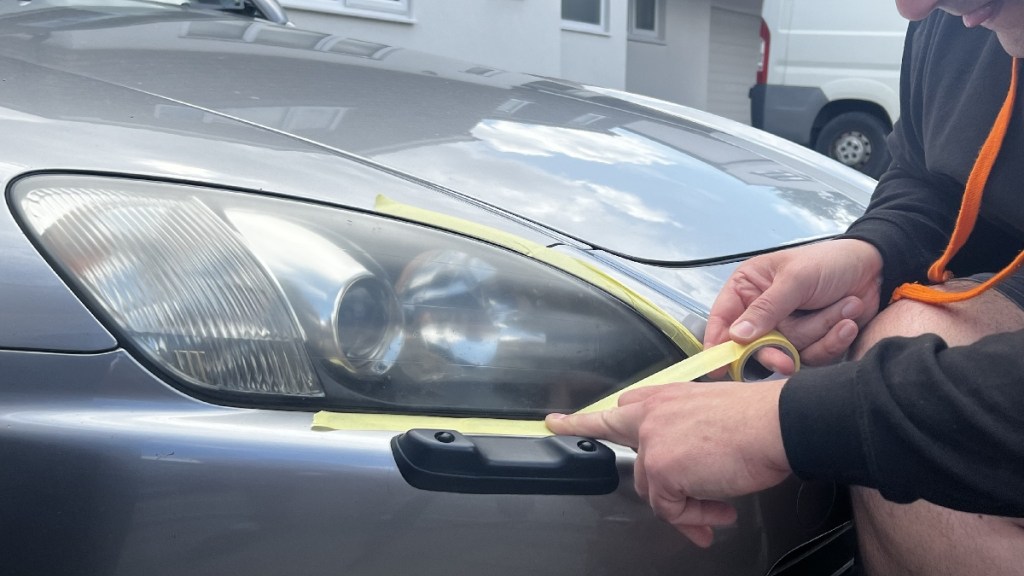
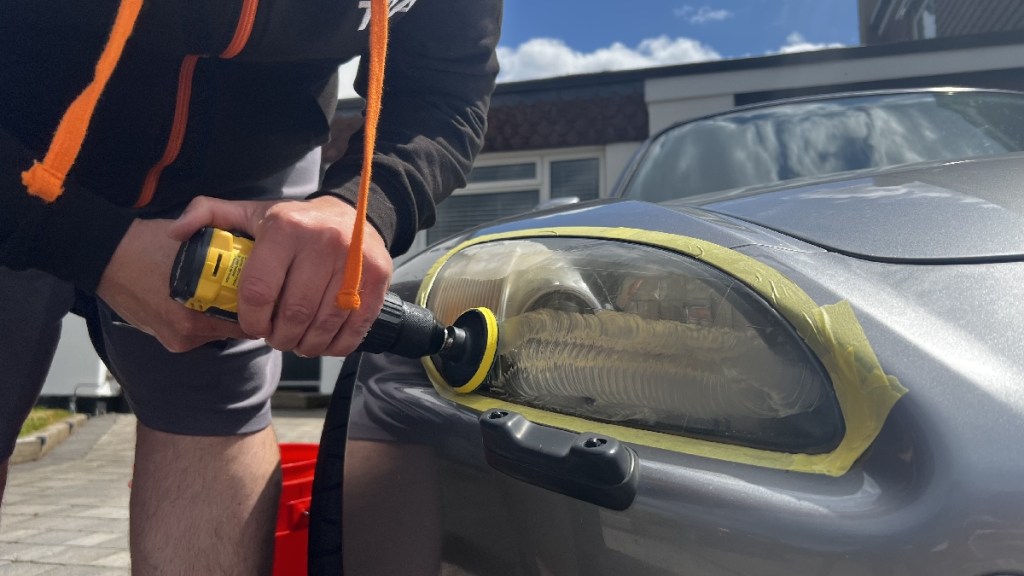
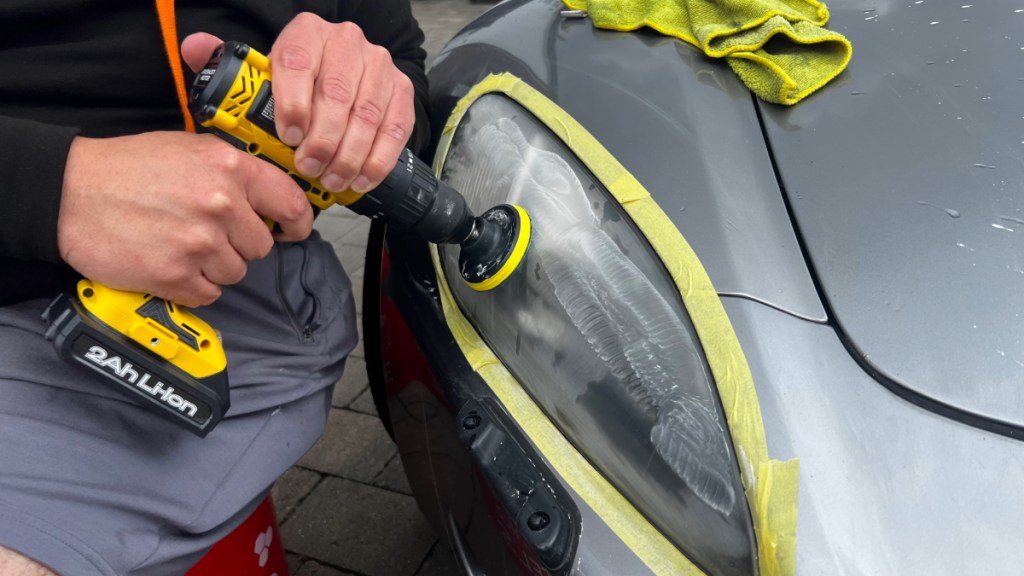

Seeing the road again
Early-2000s polycarbonate lenses don’t age gracefully. Our headlights were cloudy from a failing UV layer, stealing light output and dating the whole nose. A structured wet-sand and polish restored clarity, but sealing with a dedicated UV protectant was the crucial final step; skip it and the haze returns. The visual lift is obvious in daylight, while at night the dipped beam now throws a crisp, defined cut-off instead of a grey smudge. For anyone tackling the same jobs at home, good lighting, the right abrasives and a dual-action polisher—bread-and-butter gear from Machine Mart—make the difference between “better” and “brilliant”.
Next time we’ll turn to the shell. The S2000’s rear quarters are a known weak spot, and ours were textbook. We’ll show where to look, what fails and how we put the strength back before the styling handover to Fast Car.
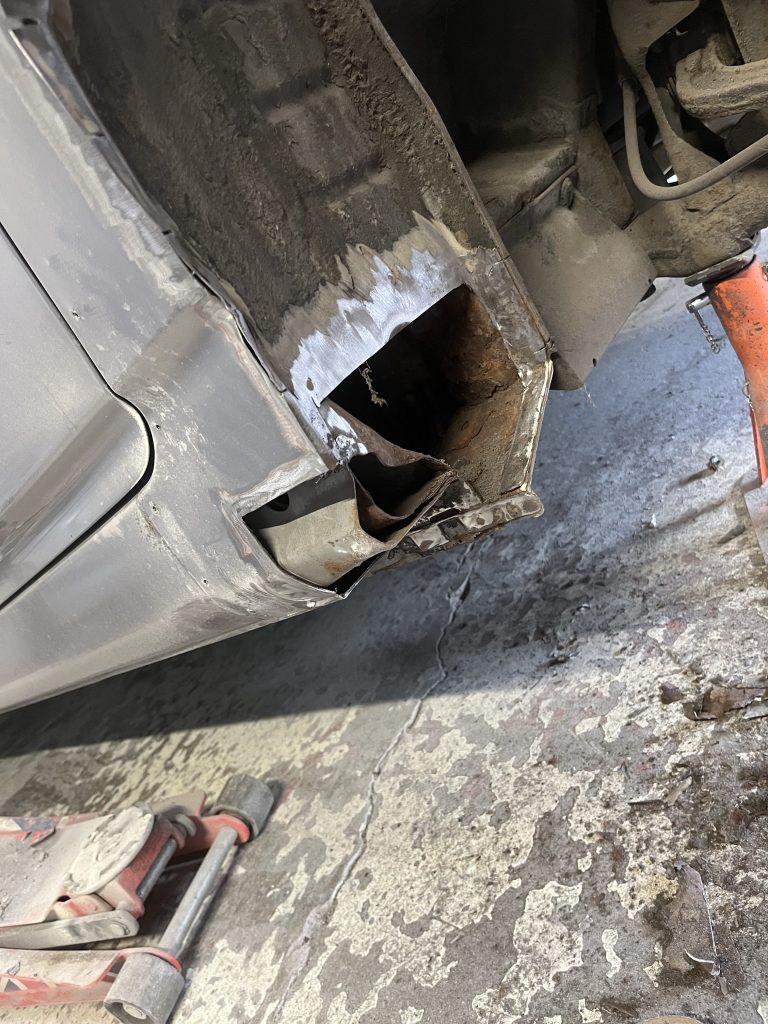
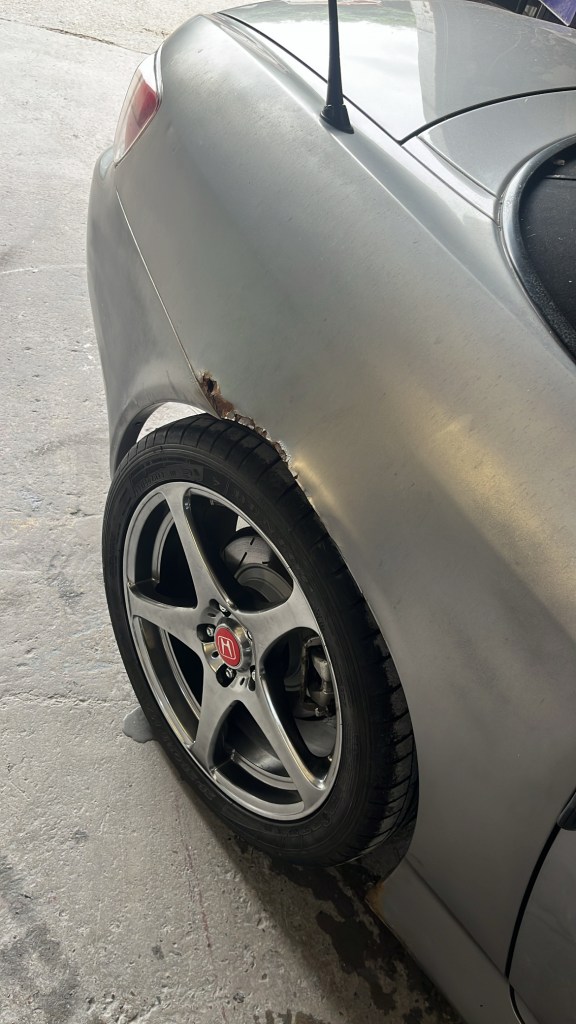
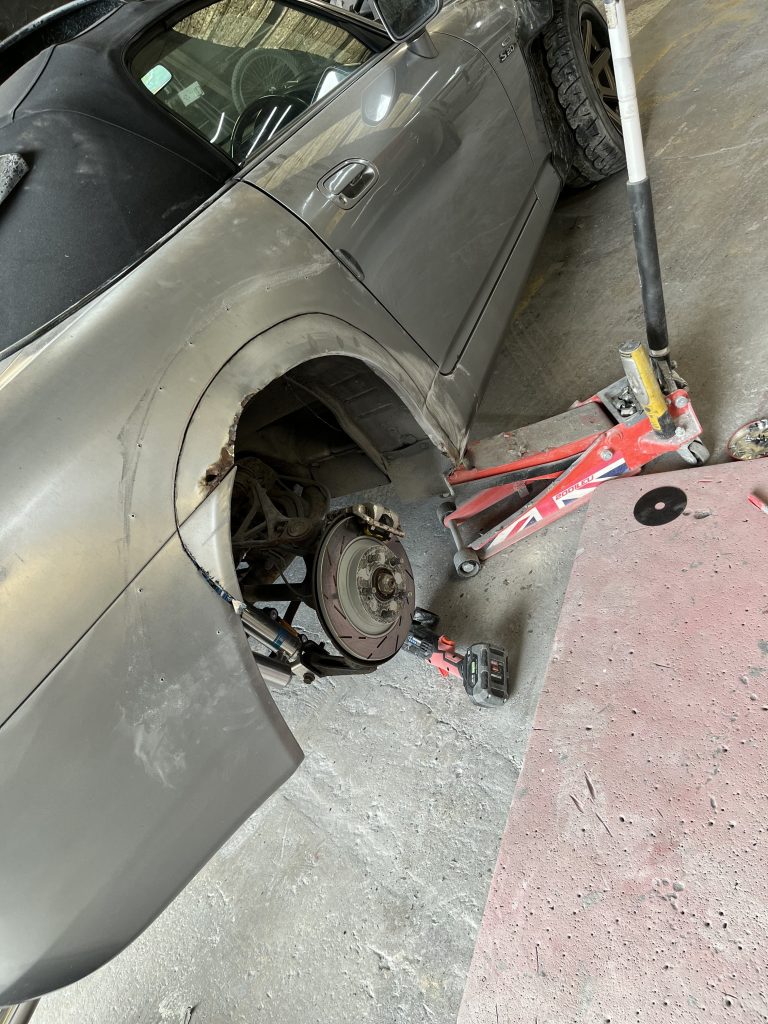
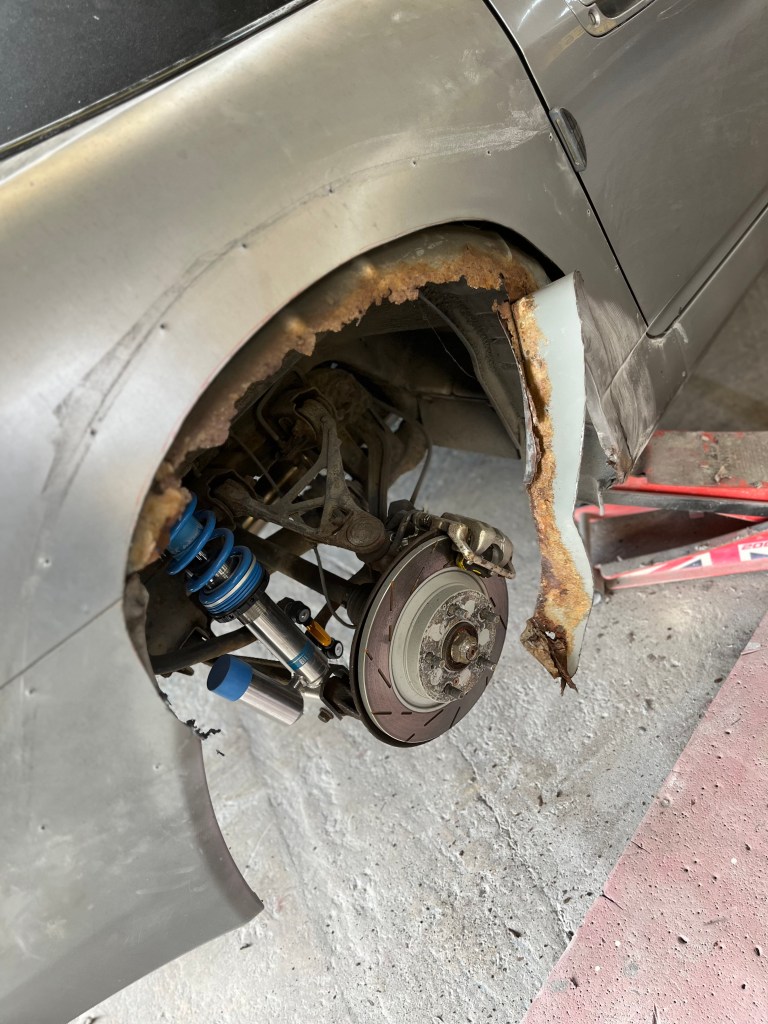
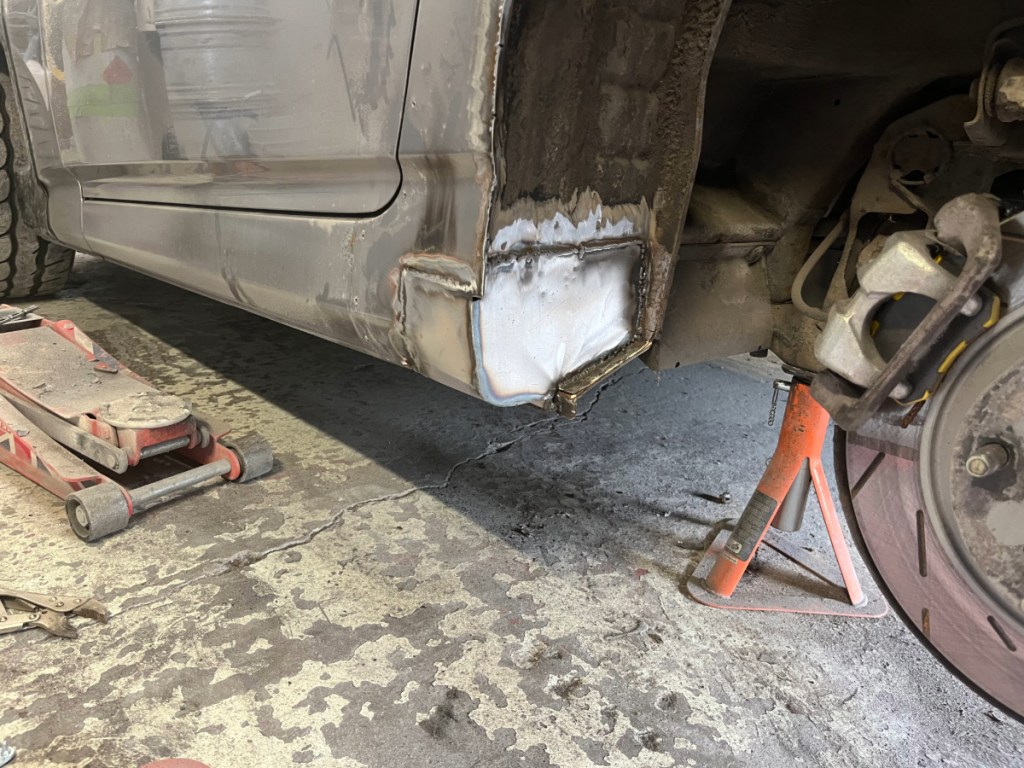
S2000 rust watchpoints
Very few S2000s reach their third decade without the rear arch lips fizzing and corrosion creeping into the lower quarters and sill returns. Our cheapest S2000 in the UK was no exception. The only fix that lasts is honest surgery: cut back to sound metal, treat what remains, weld in strength and seal it properly before any beauty work. If you’re viewing a car, run your fingers around the arch lip, inspect the lower edge ahead of the rear wheels and look closely at the inner sill. That’s where trapped mud and moisture do their worst.
With solid steel reinstated, we faced a philosophical choice. The Classics World route would be to repair the arches back to factory profiles and refurbish the original 16-inch alloys—OEM look, OEM feel, and arguably the most sympathetic finish for purists. The Fast Car route, driven by brake clearance and a bolder brief, means aftermarket bodywork and wider wheels. Both stories can be valid when the foundations are right. The point is to make the structure honest first, then choose your flavour.
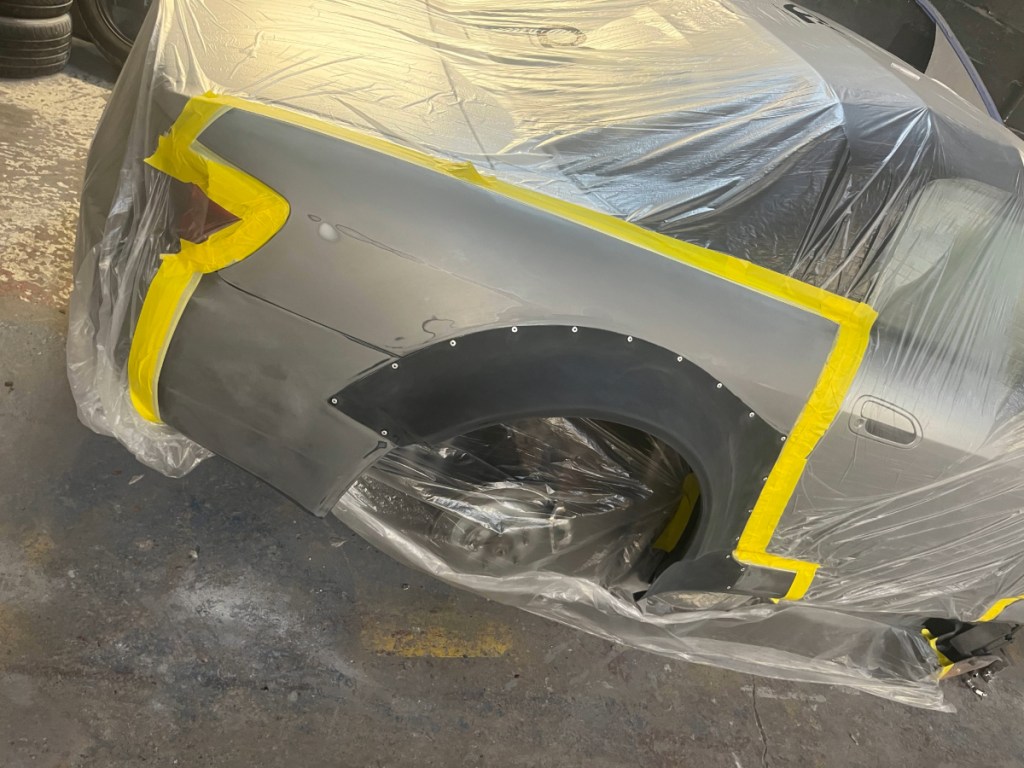
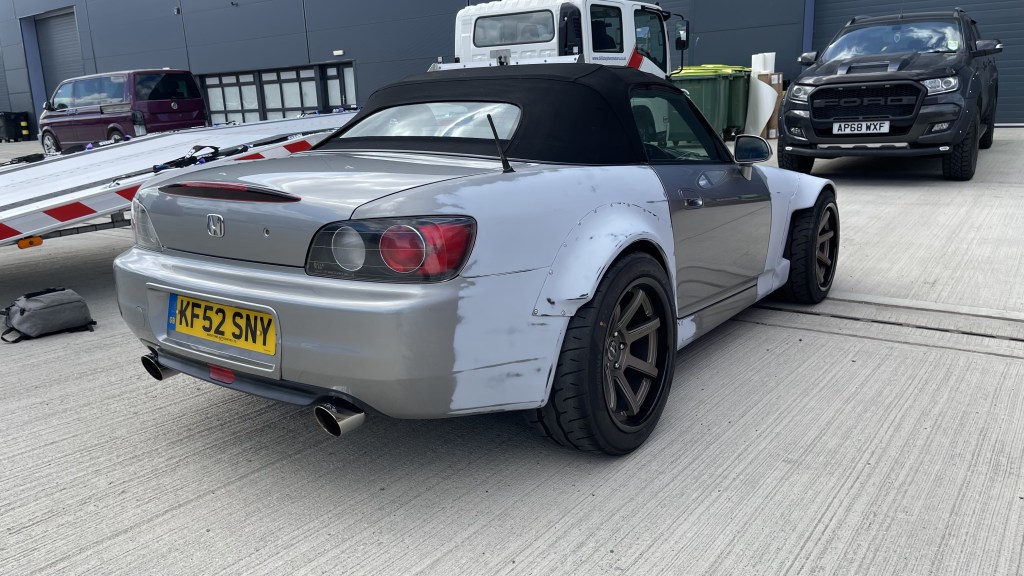

Handing over the keys
This is the moment we pass the baton. In our chapters we’ve explained why the car was so cheap, recommissioned it mechanically, restored the hood and headlights, and returned integrity to the shell. From here, Fast Car will take the same car into performance and styling—think uprated stoppers, coilovers, bracing, body styling and a fresh finish that suits wider wheels. If that’s your cup of tea, follow their updates and watch the transformation gather pace.
For those sticking with the OEM-plus path, the good news is simple: rust off the table, weather kept out and the chassis healthy, an S2000 like this becomes the car you reach for on a Tuesday night just because the roads are dry. And for all of it, the right tools matter. Good lighting, solid axle stands, a low-profile jack and quality consumables from Machine Mart turned big intentions into weekend reality—exactly how projects like this should feel.
Follow the build
This is just the beginning of what promises to be a brilliant S2000 project. Watch it evolve from crusty bargain to sorted street machine – over on the Fast Car YouTube channel.
And of course, a big thanks to Machine Mart, whose garage gear will be essential in bringing this build back to life.
If you’re a fan of classic Japanese cars – factory original or heavily modified – get yourself along to Classic Japfest at Goodwood on 4/5 October. Click the link for full details.




Want to see how the UK’s cheapest Honda S2000 project develops? Subscribe to Fast Car on YouTube and follow along on Instagram, Facebook, and TikTok.
Don’t forget to follow us too! Join us on Facebook for your daily dose of all things classic car community!


